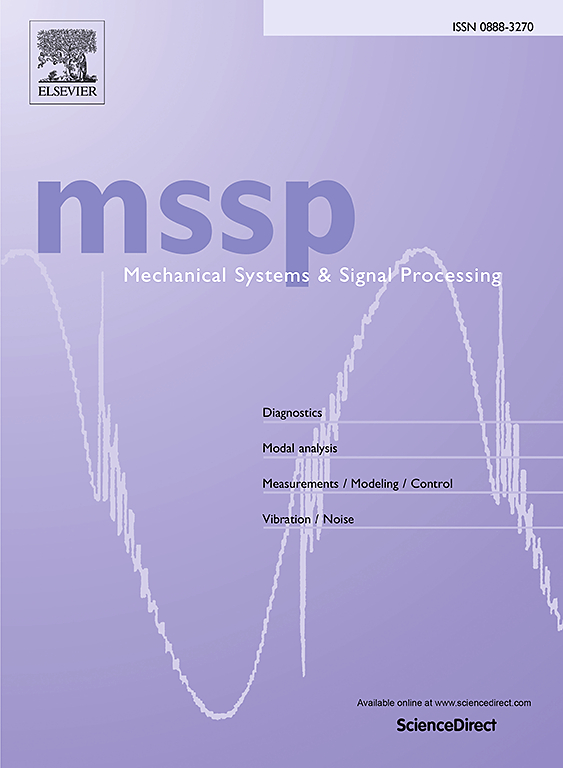A passive self-tuning vibration neutraliser
IF 7.9
1区 工程技术
Q1 ENGINEERING, MECHANICAL
引用次数: 0
Abstract
This paper proposes a new passive self-tuning vibration neutraliser, which contains a mass, a spring, a lever, a lever fulcrum and a passively self-tuning device. The mass and spring are connected to the two ends of the lever. The other end of the spring is attached to the primary structure. The effective stiffness and mass are dependent upon the position of the fulcrum, which is self-tuneable passively based on the primary structure response. A self-tuning rule is defined for the working of the passively self-tuning device. Specifically, the position of the fulcrum (or the lever ratio) stays unchanged when the displacement of the primary structure is less than a prescribed threshold. Otherwise, the self-tuning device will be kept triggered until an appropriate position of the fulcrum is researched and consequently the displacement is less than the threshold. The self-tuning device is essentially a passive feedback-control system, requiring no sensors, actuators, and external energy. Such a passive self-tuning vibration neutraiser is designed and constructed. Theoretical analyses reveal that a zero can be assigned at the excitation frequency over a broad range to a frequency response function of the primary structure coupled with the proposed neutraliser. It is demonstrated numerically and experimentally on a simply supported beam that the proposed neutraliser exhibits highly-effective, robust and broad-bandwidth performance in control.
被动自调谐振动中和器
本文提出了一种新型被动自调谐减振器,它由质量、弹簧、杠杆、杠杆支点和被动自调谐装置组成。质量和弹簧连接在杠杆的两端。弹簧的另一端连接在初级结构上。有效刚度和质量取决于支点的位置,支点可根据结构的主响应被动自调。定义了被动自调谐装置工作的自调谐规则。具体来说,当初级结构的位移小于规定的阈值时,支点的位置(或杠杆比率)保持不变。否则,自调谐装置将一直被触发,直到找到合适的支点位置,从而使位移小于阈值。自调谐装置本质上是一个被动反馈控制系统,不需要传感器、执行器和外部能量。设计并制作了这种被动自调谐振动减震器。理论分析表明,与所提出的中和器耦合的主结构的频率响应函数可以在很宽的范围内在激励频率处指定一个零。在简支梁上的数值和实验表明,所提出的中和器具有高效、鲁棒和宽带宽的控制性能。
本文章由计算机程序翻译,如有差异,请以英文原文为准。
求助全文
约1分钟内获得全文
求助全文
来源期刊

Mechanical Systems and Signal Processing
工程技术-工程:机械
CiteScore
14.80
自引率
13.10%
发文量
1183
审稿时长
5.4 months
期刊介绍:
Journal Name: Mechanical Systems and Signal Processing (MSSP)
Interdisciplinary Focus:
Mechanical, Aerospace, and Civil Engineering
Purpose:Reporting scientific advancements of the highest quality
Arising from new techniques in sensing, instrumentation, signal processing, modelling, and control of dynamic systems
 求助内容:
求助内容: 应助结果提醒方式:
应助结果提醒方式:


